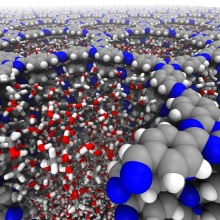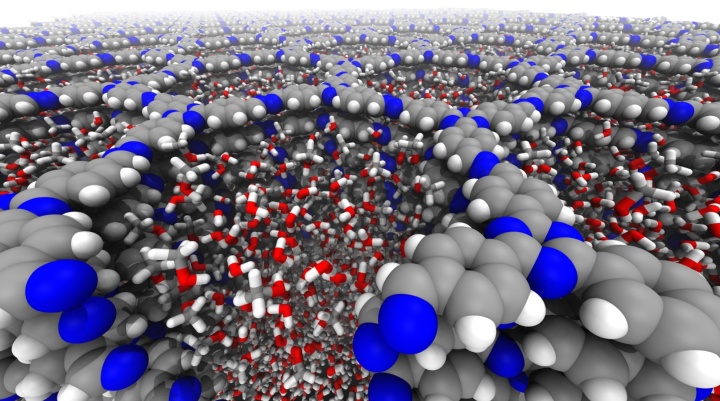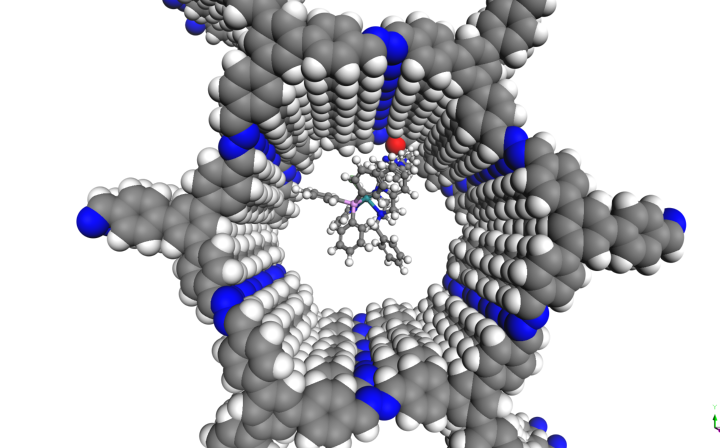The collaborative research center "Molecular heterogeneous catalysis in confined geometries" (SFB 1333) at the University of Stuttgart is entering its second funding period and has received funding of almost 12 million euros. This was approved by the senate of the German Research Foundation (DFG) in a session held on May 24 and 25, 2022. The SFB links 19 research groups at the University of Stuttgart with partners at the Max Planck Institute for Solid State Research in Stuttgart and the universities of Paderborn, Marburg and Bochum. Spokesperson for the SFB is Prof. Michael Buchmeiser from the Institute of Polymer Chemistry at the University of Stuttgart.
Catalytic reactions account for around 80 percent of all syntheses in the chemical and pharmaceutical industries. Because they are relatively resource and energy efficient, they are sustainable and already allow annual cost reductions of billions of euros. Nevertheless, compared to biological systems (enzymes), many chemical-catalytic processes still show significantly lower specificity for certain primers and lower selectivity for the desired product. Against this background, the researchers at SFB 1333 want to find out how so-called mesoporous materials, i.e. materials with a pore diameter between 2 and 50 nanometers, can synergistically exert a confining effect on catalytic centers located therein through a structurally defined pore geometry or pore functionality, following examples seen in nature. For this purpose, molecular organo- or organometallic catalysts are selectively anchored within the pores and the influence on the reaction processes is then investigated. The aim is to develop hybrid catalyst systems that enable more efficient chemical-catalytic production processes or even open completely new reaction pathways.
"During the first funding period, we were able to demonstrate that using the effect of confined cavities to increase selectivity and specificity, based on processes that occur in enzymes, is also possible in chemical catalysis," explains the spokesman of SFB 1333, Prof. Michael Buchmeiser from the Institute of Polymer Chemistry at the University of Stuttgart. To this end, the researchers first developed materials that have defined surface functionalizations and achieve an unprecedented precision of pore size of just fractions of a nanometer. Targeted variation of pore size enabled improved selectivity in olefin metathesis, a particular reaction in organic chemistry, and in certain addition reactions. "This means that the basic tools are now available to study 'catalysis in confined cavities' in detail across a broad spectrum of reactions," says Buchmeiser, highlighting the initial research successes.
The aim of the second funding period is to quantify the effects of the confined geometric cavities and to exploit them specifically to optimize selected catalytic reactions. In this process, for example, the substrate molecules are specifically aligned by the defined cavity and already associated with the catalyst before the actual reaction. In addition, in the second funding period, special attention will be paid to the changed structure of the solvent in the pore and the previously static substrates will now be exploited as moving or electro- or photo-active parts in the catalytic process.
To understand the processes in the pore, a precisely tuned arsenal of experimental-analytical and theoretical methods is available that allow spectral, spatial, and temporal characterization across all relevant size scales. This will be expanded in the second funding period to include additional experimental analytical methods. Theoreticians and materials scientists are to cooperate even more closely in the simulation of mesoporous materials. One focus in the area of catalysis is the thermal and electrochemical reduction of carbon dioxide, which will be of great importance for a sustainable transformation of the industry.
New NMR Spectroscope
The research program also offers a comprehensive data management concept and a graduate college to strategically encourage young researchers. The University of Stuttgart is supporting SFB 1333 during the second funding period in acquiring a solid-state nuclear magnetic resonance spectroscope (NMR) and a special absorption spectrometer. In addition, the researchers benefit from close networking with the Stuttgart Cluster of Excellence "Data-integrated Simulation Science" (SimTech) and the SFB 1313, which deals with transport processes in porous media.
Expert Contact:
Prof. Dr. Michael R. Buchmeiser, University of Stuttgart, Institute of Polymer Chemistry, Chair of Macromolecular Materials and Fiber Chemistry, Phone +49 711 685 64075-, E-Mail




